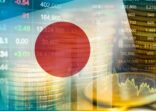We believe 2017 is likely to be a positive year for most Asian high-yield bonds.
Several macro factors appear to support high-yield bonds. The outlook for the energy market and commodities has improved. The US economy appears to be stable and expectations are for the high-yield default rate to drop this year. Europe is turning around on a fundamental economic level. In China, private enterprises focused on domestic consumption are improving earnings and should continue to do well.
In Asia, a particularly attractive opportunity is in high-yield bonds that are denominated in certain local currencies.
The Indian rupee and Indonesian rupiah, for example, seem attractive from both a fundamental and technical perspective. These high-yielding local currency bonds have the potential for return and yield based on economic growth, with an additional boost from currency appreciation relative to the US dollar. Because the dollar seems to be fundamentally overvalued, the Indian rupee and Indonesian rupiah are more likely to appreciate than depreciate.
From a macro perspective, both countries have been managing inflation expectations. In India, growth is expected to be strong this year, supported by government spending, the continuing reform agenda and foreign investment flows. Indonesia is also well-positioned for economic improvement, supported by a tax amnesty scheme that should boost government revenues.
There is a market perception that interest rate increases by the US Federal Reserve will eventually result in fixed income generating negative returns. That is not necessarily true.
The further you move away from US treasuries, the less sensitivity there is likely to be to changes in US interest rates. Returns in other segments of the bond market have been driven more by the currency or credit components. In the case of Asian local currency bonds, currency gains have been key drivers of returns. In fact, recent periods of volatility linked to US treasury yield movements have not had a significant impact on Asian high-yield bonds.

Investors remain concerned about leverage in China, but we believe the government has enough policy flexibility to reduce it in an orderly fashion. In terms of policy priorities, economic stability seems to be the government’s strategic focus. Authorities are likely to continue carefully managing corporate deleveraging. This should have long-term benefits for the market and economy.
Another concern is the possibility of protectionist trade measures adopted by the US. If the Trump administration imposes an import tax on goods, Asia’s more open economies would be affected. Political risk is emanating from Europe and the outcome of the German elections poses potentially significant downside risk.
Global shocks could unnerve investors and capital could flee risk assets. After the Brexit vote last June, however, Asian high yield bonds were not strongly affected.
Asian high yield tends to have the same level of volatility as US high yield. Yet when comparing the two, investors in Asian bonds would have picked up four percentage points more in annualised yield since 1999, the year that the JP Morgan Asia Credit Index was incepted (as shown in the chart below).
In fact, as also shown from the chart below, in terms of emerging market bonds, Asian high-yield has provided the best risk-adjusted returns for investors.

Teresa Kong is a portfolio manager at Matthews Asia
For Institutional/Professional Investors Only
The information contained herein has been derived from sources believed to be reliable and accurate at the time of compilation, but no representation or warranty (express or implied) is made as to the accuracy or completeness of any of this information. Matthews International Capital Management, LLC (“Matthews Asia”) and its affiliates do not accept any liability for losses either direct or consequential caused by the use of this information.
The views and information discussed herein are as of the date of publication, are subject to change and may not reflect current views. The views expressed represent an assessment of market conditions at a specific point in time, are opinions only and should not be relied upon as investment advice regarding a particular investment or markets in general. Such information does not constitute a recommendation to buy or sell specific securities or investment vehicles. This document does not constitute investment advice or an offer to provide investment advisory or investment management services, or the solicitation of an offer to provide investment advisory or investment management services, in any jurisdiction.
Investments involve risk. Past performance is no guarantee of future results. Investing in international and emerging markets may involve additional risks, such as social and political instability, market illiquidity, exchange-rate fluctuations, a high level of volatility and limited regulation.
*Source: Merrill Lynch, Pierce, Fenner & Smith Incorporated (“BofAML”), used with permission. BofAML permits use of the BofAML indices and related data on an “as is” basis, makes no warranties regarding same, does not guarantee the suitability, quality, accuracy, timeliness, and/or completeness of the BofAML indices or any data included in, related to, or derived therefrom, assumes no liability in connection with the use of the foregoing, and does not sponsor, endorse, or recommend Matthews Asia, or any of its products or services.
















